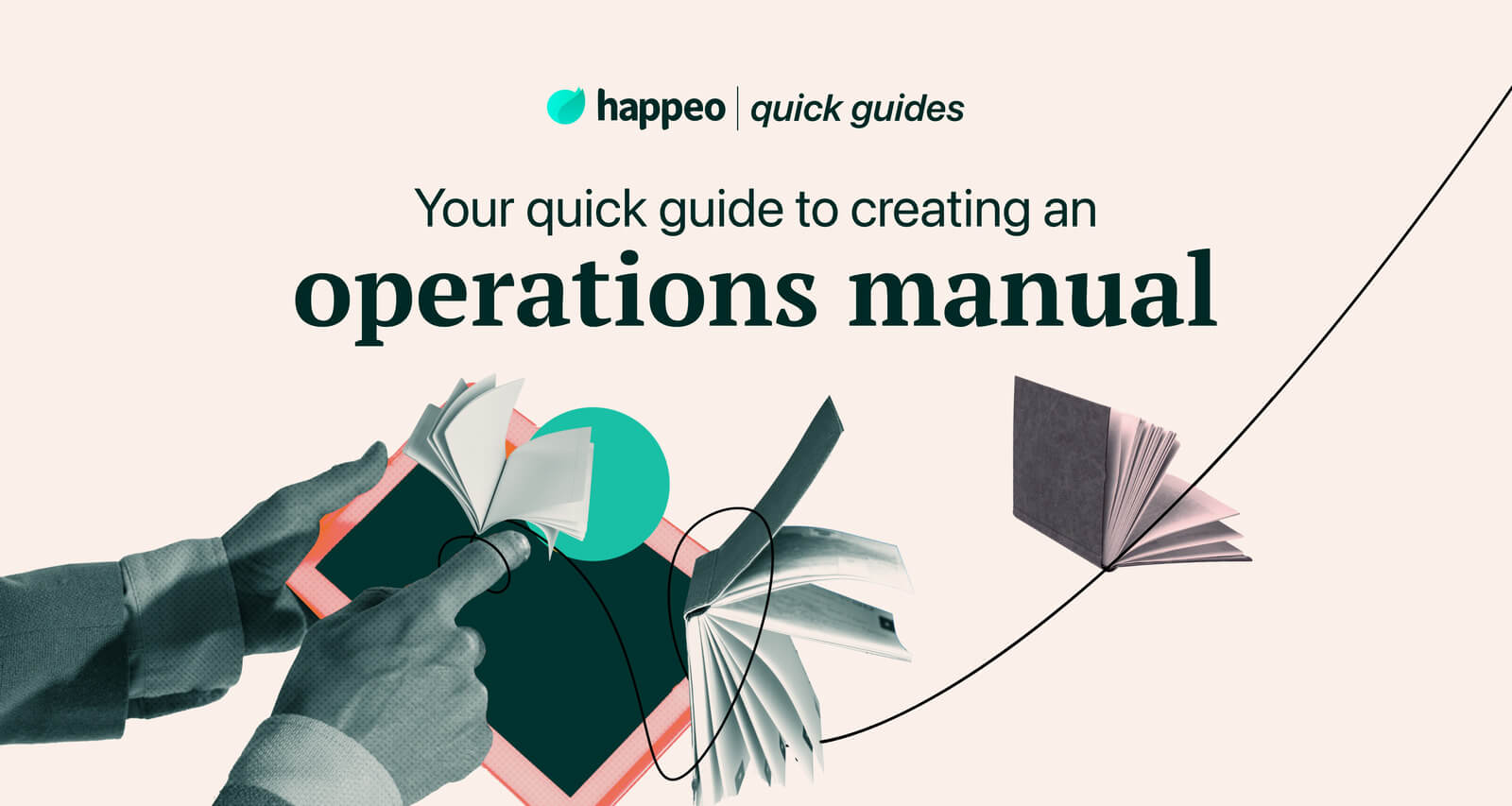
Quick guides Employee engagement
Your quick guide to creating a career development plan [incl. template]
![Your quick guide to creating a career development plan [incl. template]](https://www.happeo.com/hubfs/Happeo-Website-Assets/New/blog/Blog_95947632131_featured.jpg)
8 mins read
Start building your digital home with Happeo
Request a demoQuick guides Employee engagement
Product
Features
Solutions
Happeo for
Use cases
Resources
Explore
Support
Happeo For
Use cases
Comparisons
Explore
Support
Recent
Quick guides Employee engagement
![Your quick guide to creating a career development plan [incl. template]](https://www.happeo.com/hubfs/Happeo-Website-Assets/New/blog/Blog_95947632131_featured.jpg)

Tiia Tirkkonen
8 mins read
Now, more than ever, employees are in the driver’s seat. They’re able to command more competitive salaries, more flexibility, and more development opportunities.
In fact, a LinkedIn Workplace Learning Report found that 94% of employees would stay at a company longer if it invested in their career development.
However, many organizations rarely have the time to help employees shape the future direction of their careers. Or simply do not know where to start.
That’s where a career development plan comes in. It provides a structured way to help your employees develop on the job. Career development plans not only benefit the individual employee, but also the organization itself —they can help to boost morale and productivity, while expanding the skillset of your team.
In short, a career development plan is an actionable plan that leads an employee to their dream job. Also called a career progression plan, a career development plan, is a personal roadmap of an employee’s career goals, including practical steps on how to reach them.
Often, a career development plan begins with the employee’s long-term career goal, such as getting promoted to a senior management role or becoming a thought leader in their industry. Once this goal is established, more immediate and achievable goals can be set to map out a clear development plan.
The ‘Great Resignation’ has seen millions of people voluntarily quit their jobs over the past two years. That’s why it’s no surprise that retaining top talent is a main priority for leaders in 2023.
While increasing compensation and offering flexible work schedules are good ways to keep employees happy, investing in the professional development of your team might be the number one strategy. In fact, according to this report, 86% of professionals said that they would change jobs if they were offered more opportunities for professional development.
In other words, career development opportunities make people want to stay with their companies for longer. But besides retaining your top workers, how else can a career development plan benefit your organization?
Perhaps the most obvious benefit of upskilling your employees is that it makes them better at their jobs. Companies can cultivate a workforce of better-trained and more productive employees. Consider these numbers from Deloitte:
“Organizations with a strong learning culture are 92% more likely to develop novel products and processes, 52% more productive, 56% more likely to be the first to market with their products and services, and 17% more profitable than their peers.”
Clearly, prioritizing the learning and development of employees can be a huge strategic advantage over your competitors. And it's cost-effective too. Upskilling an existing employee is usually cheaper than hiring externally as you save the costs involved when sourcing, interviewing, and onboarding a new employee.
Most employee engagement research shows that professional development and career progression are among the top drivers of employee satisfaction. According to Deloitte, “employees under the age of 25 rate professional development as their number one driver of engagement, and this is the number two priority for workers up to age 35”.
Even if promotions are not possible, employees still want to feel like they are developing in their role, and some might want the freedom to try something completely new. Career development plans help employees feel valued and give them the sense that your organization cares about the progression of their careers and their future potential.
Follow the next steps to create a career development plan for your team or yourself.
The first step in any career development plan is to reflect on where you and your team members are in your careers—this includes your roles, responsibilities, skills, and strengths. You can define this by answering these and similar questions:
What does the company want to achieve in the next three to five years? In this section of the career development plan, you’ll want to list your career goals. This might include a new skill you want to master, an aspirational leadership position, or a brand new role in a different department, or even industry.
Once you've established your (team's) ultimate career goals, it's up to you to bring that back to what's realistic in the short term, and identify where you should be in a year or two. Doing so will help you and your team identify the skill or experience gap, and the steps needed to achieve their goals.
The next step is to create an action plan of skills and experiences that you need to acquire to reach your most immediate goals. If you want to transition into a new position, it might be helpful to find job listings and descriptions to see what skills and experience you’re missing from the requirements.
Once you’ve identified the skills and experience required, it’s time to create specific goals to help close the gap. Set three to five goals and make sure they are SMART (specific, measurable, achievable, relevant, and time-bound).
For instance, if you’re a graphic designer who wants to become a front-end developer, one of your goals might be to learn HTML and CSS coding within a 3-month timeframe. Alternatively, if your aim is to manage a team within two years, your goal might be to coordinate two major projects in a year or take a 6-week leadership course.
For each goal you set, make sure you write down how you plan to measure success. To use the example above, the ability to code a simple website would be a good measure of progression.
Managers can play a crucial role in helping their employees create and fulfill their career development plans. Not only can they keep their employees accountable, but they can also provide resources, as well as connect them with relevant people in their network. Here are some ways managers can help employees with the career planning process:
While career development plans and performance reviews might seem like separate processes, performance reviews can actually lay the groundwork for the career plan.
During the performance review, the manager evaluates an employee’s work performance, points out strengths and weaknesses, and identifies training and development needs.
Performance reviews often identify if an employee needs to develop or improve certain ‘high leverage’ skills; these include strategic thinking, giving feedback, prioritization, public speaking, adaptability, leadership, etc.
For example, if an employee excels at their day-to-day responsibilities but rarely applies big-picture thinking, the employee might be encouraged to develop their strategic thinking skills by joining strategy meetings.
Besides the practical skills needed for a particular role, the career development plan should also include one or two of the high-leverage skills mentioned above to help employees reach their maximum potential.
In order to help your employees with their career development plan, make sure you make it easy for them to access key resources. It’s a good idea to list all the resources available at your organization. Do you have a library at the office? Or an online course subscription such as LinkedIn Learning?
Some organizations offer a yearly learning and development budget for employees. If your organization is one of them, you should ensure that your employees know how much is available for them, and how to submit a request.
In most cases, employees have to submit a request to their direct manager and then to the finance department. Whether it’s an industry event or an online course, employees usually have to explain why the development opportunity will be valuable. Because of this, it’s a smart idea to include some tips on how to make the request successful:
While not every employee will have a promotion as the main goal of their career development plan, there will definitely be some team members who want to climb the ladder. That’s why you should make your promotion process as clear as possible for your employees. Consider communicating the following points:
You should store your career development plans in an accessible location such as your company intranet or a centralized platform for employees. The easier it is to find, the more likely your employees will make use of it.
If your career development plan is on a company intranet, some solutions will provide analytics showing how long and how frequently employees view their development plan. If you’re interested in exploring how a career development plan could become a pivotal ingredient of your company intranet, try out Happeo's career development template.
